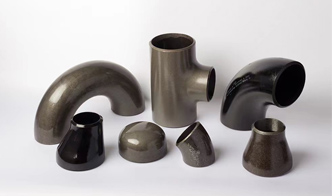Current location:
3 4 threaded pipe fittings
Date:2025-08-18 05:06:08 Read(143)

Types of Flanges in Oil and Gas Industry In the oil and gas industry, flanges play a critical role in connecting various piping systems and equipment. They serve as the mechanical interface between different components, ensuring safe, reliable, and efficient operation under high pressure and temperature conditions. Understanding the different types of flanges available is essential for engineers and technicians involved in the design, installation, and maintenance of oil and gas systems. This article provides an overview of the most commonly used types of flanges in the oil and gas sector. 1. Weld Neck Flange Weld neck flanges are characterized by a long, tapered neck that provides a smooth transition between the flange and the piping system. This design reduces stress concentration, making it ideal for high-pressure applications. The weld neck flange is typically welded to the pipe, creating a strong and leak-proof connection. These flanges are commonly used in critical applications such as pipelines, vessels, and reactors in the oil and gas industry. 2. Slip-On Flange Slip-on flanges are designed to be slid over the pipe before being welded in place. They have a lower manufacturing cost and are easier to install compared to other types. However, they are not as strong as weld neck flanges, making them suitable for lower pressure applications. Slip-on flanges are popular in oil and gas applications where the conditions are less severe, such as in drainage and vent piping. 3. Blind Flange Blind flanges are solid discs used to seal the end of a piping system. They are essential in situations where future piping connections may be needed or when maintenance is required. Blind flanges provide a strong seal against pressure, making them suitable for high-pressure pipelines and vessels. They are commonly used in oil and gas production facilities, particularly at wellheads and in separator systems. types of flanges in oil and gas 4. Socket Weld Flange Socket weld flanges are designed to be inserted into a recessed area of the flange. They are welded on the outside, providing a strong and durable joint capable of withstanding high pressures. Socket weld flanges are suitable for small-diameter pipes and are often used in applications where space is limited. They are commonly employed in the oil and gas industry for transmission lines and small equipment connections. 5. Lap Joint Flange Lap joint flanges are usually paired with a stub end, allowing for easy separation and reassembly. These flanges do not require complete welding, making them ideal for systems that need to be disassembled frequently. They are commonly used in hydrocarbon processing and in situations where maintenance access is necessary. Lap joint flanges provide the flexibility to adapt to various pipe connections while maintaining a strong seal. 6. Threaded Flange Threaded flanges are designed for use where welding may not be possible. They have internal threads that allow them to be screwed onto the pipe. While easier to install and remove, threaded flanges have limitations in high-pressure applications where leakage could be a concern. Due to their design, they are generally reserved for lower pressure and temperature operations, often found in auxiliary systems in oil and gas facilities. Conclusion The choice of flange type in the oil and gas industry is driven by a variety of factors, including pressure, temperature, space constraints, and the potential for future modifications. Understanding the differences between weld neck, slip-on, blind, socket weld, lap joint, and threaded flanges helps engineers make informed decisions about system design and maintenance. Selecting the appropriate flange not only ensures the integrity of the system but also contributes to the overall safety and efficiency of oil and gas operations.
Share:
Kind tips:The above content and pictures are compiled from the Internet and are for reference only. I hope they will be helpful to you! If there is any infringement, please contact us to delete it!
You may also like
- Exploring the Benefits and Applications of Bulk Galvanized Steel Pipes in Construction and Industry
- Exploring Threaded Coupling Techniques and Applications for Enhanced System Integration
- en 1092 1 flange weight
- Exploring EN1092-1 PN10 Flanges Standards, Specifications, and Applications in Industrial Settings
- Exploring the Specifications and Uses of 1% 201% 4% X 21 Galvanized Pipe in Construction
- bending stainless steel exhaust tubing
- Cost analysis of 3-inch galvanized pipe for construction and plumbing projects
- Exploring the Advantages and Applications of Seamless Steel Pipes in Modern Industries and Construct
- Exploring 3% and 4% Specifications for 12-Inch Galvanized Pipe Applications and Features